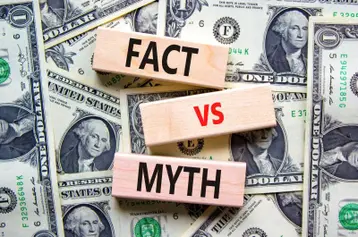
Table of contents
- 1.Myth #1: My business doesn’t qualify
- 2.Myth #2: The savings aren’t worth it
- 3.Myth #3: It’s too complicated to claim
- 4.
Myth #1: My business doesn’t qualify
Startups and SMBs that aren’t in scientific or technical industries may assume they don’t qualify for the federal R&D tax credit. Many businesses also perform activities that qualify without realizing it. The federal R&D tax credit can be claimed by companies of any size in a wide range of industries, including cosmetics, food and beverage, apparel, telecommunications, software development, and more. Chances are, if your company is doing anything technology-based, improving it, and selling it to customers, you may likely qualify.
Myth #2: The savings aren’t worth it
In 2020, according to Tax Foundation, $11.8 billion was claimed in federal R&D tax credits. Remember, this is a tax credit, not a deduction. You can apply it against certain taxes owed. Plus, the TriNet Clarus R+D technology-driven solution helps to simplify the process of claiming the tax credit and helps to reduce overall fees.
The federal R&D tax credit was signed into law originally in 1981 and expanded in 2015 with the Protecting Americans from Tax Hikes Act (PATH Act), enabling early-stage companies to use the tax credit against certain payroll tax liabilities. The PATH Act allowed newer, smaller companies to take advantage of the tax credit that was previously inaccessible. Regardless of which industry your business fits within, it’s worth looking into and should be an ongoing part of your annual tax strategy.
Myth #3: It’s too complicated to claim
Many companies feel overwhelmed and don’t know where to start. Working with a trusted, experienced provider is key, especially one who utilizes a technology-driven solution, allowing you to organize your documentation all in one place. A robust R&D tax credit platform also helps with the easy generation of a complete R&D study where all your qualifying activities are clearly documented. In the event of an IRS audit, it is important to have access to thorough documentation that clearly substantiates your claim. Having a trusted provider like TriNet Clarus R+D in your corner makes all the difference, so that you can confidently claim the tax credits you’ve earned.
Taking advantage of the federal R&D tax credit doesn’t have to be confusing or complicated. Optimize your company’s innovation and growth, and team up with our tax experts today.
© 2024 TriNet Group, Inc. All rights reserved. This communication is for informational purposes only, is not legal, tax or accounting advice, and is not an offer to sell, buy or procure insurance. TriNet is the single-employer sponsor of all its benefit plans, which does not include voluntary benefits that are not ERISA-covered group health insurance plans and enrollment is voluntary. Official plan documents always control and TriNet reserves the right to amend the benefit plans or change the offerings and deadlines.
This post may contain hyperlinks to websites operated by parties other than TriNet. Such hyperlinks are provided for reference only. TriNet does not control such web sites and is not responsible for their content. Inclusion of such hyperlinks on TriNet.com does not necessarily imply any endorsement of the material on such websites or association with their operators.
.jpeg?format=webp&quality=75&disable=upscale&width=160)
Jordan Peck
Table of contents
- 1.Myth #1: My business doesn’t qualify
- 2.Myth #2: The savings aren’t worth it
- 3.Myth #3: It’s too complicated to claim
- 4.





